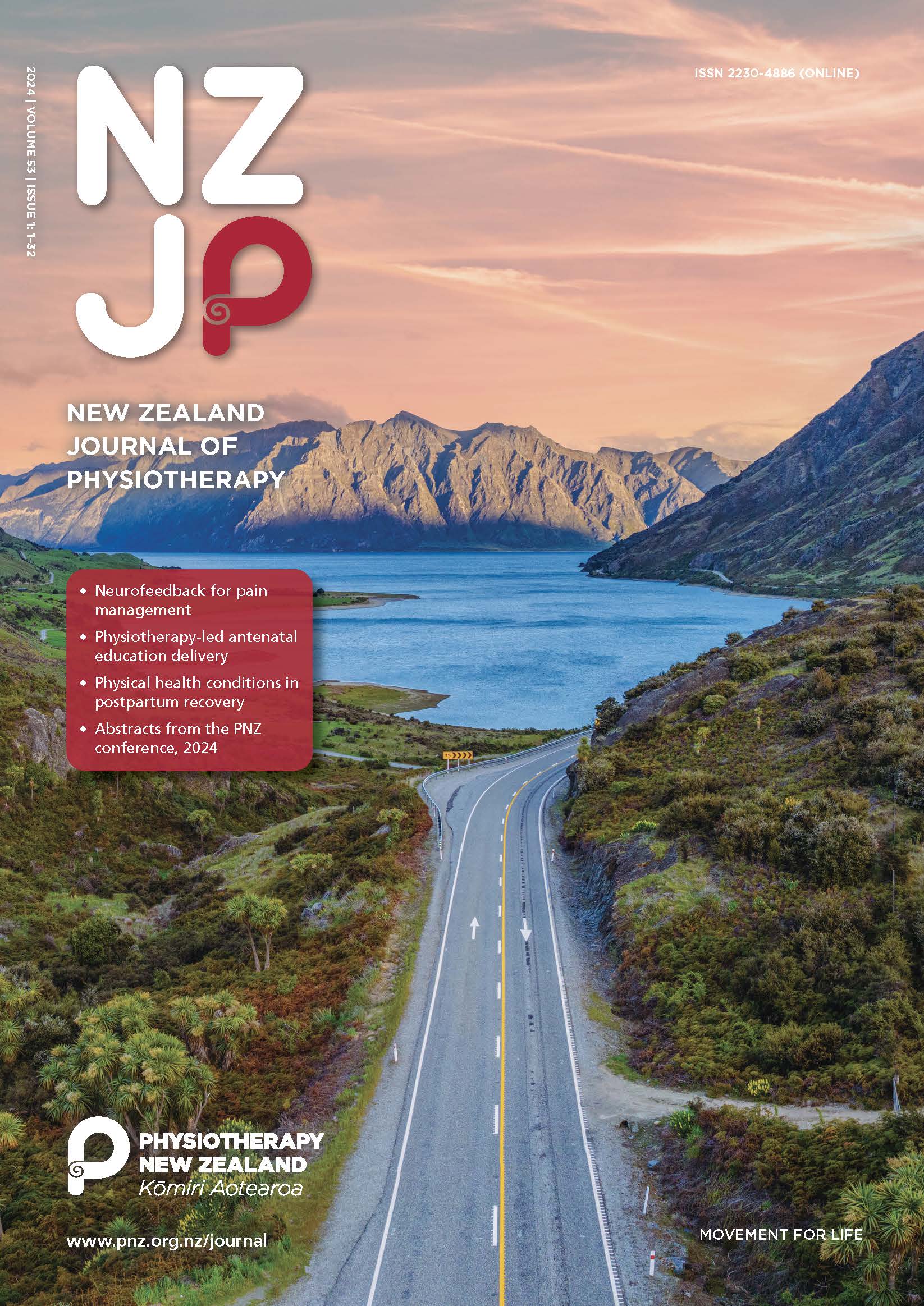An observational cross-sectional study of expectant mothers in Western Australia: To understand perceptions of delivery mode of education and exercise physiotherapy-led antenatal classes
DOI:
https://doi.org/10.15619/nzjp.v53i1.395Keywords:
Antenatal, Education, Hospital-led, Physiotherapy, TelehealthAbstract
Antenatal physiotherapy-led education and exercise classes moved from face-to-face to telehealth delivery in 2022 due to coronavirus disease restrictions. The aim of this study was to describe the experiences of mothers who participated in (face-to-face and telehealth) antenatal education and/or exercise classes. An observational cross-sectional design was employed, which incorporated the development of an online Qualtrics survey, containing a total of 51 items with eight open-ended questions. Surveys were emailed to participants who took part in antenatal education and/or exercise classes at two public maternity hospitals in Western Australia. Overall, 202 surveys were distributed, and 44 (22%) surveys were returned with 41 (20%) complete responses. Of the 41 responses, 17 (89%) were satisfied with the face-to-face classes and 30 (77%) were satisfied with the telehealth classes. Results highlighted that participants preferred face-to-face classes, despite noting the convenience of telehealth. Three themes were derived from the open-ended questions: “difficulties with the classes”, “lack of connection and support”, and “class convenience and enjoyment”. The reasons for the difficulties and lack of connection included challenges with technology whereas class enjoyment was related to the classes continuing during periods of isolation. In conclusion, participants were more satisfied with face-to-face, versus online telehealth classes. Future research investigating experiences with a hybrid model of delivery, to increase accessibility of antenatal classes for women, is recommended.


